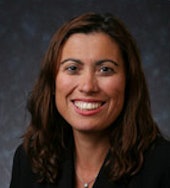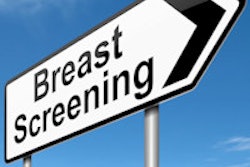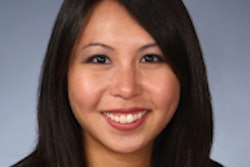
LAS VEGAS - A new study found that fewer than 2% of women informed that they had dense breast tissue returned for follow-up exams with ultrasound, according to a talk at the American Institute of Ultrasound in Medicine (AIUM) meeting. The study raises questions about the effectiveness of breast density laws in improving screening.
After more than a year under New York's breast density information law, researchers from Elizabeth Wende Breast Care in Rochester, NY, found that only 1.9% of women came back to get a screening breast ultrasound after being informed following mammography that they had heterogeneously or extremely dense breast tissue. Only one cancer was subsequently detected in this group of patients.
"In our preliminary review since the New York state mandate to inform patients regarding their breast density, we found that 3% of the patients returning for an ultrasound underwent a biopsy, with one cancer diagnosed," said Dr. Stamatia Destounis, who presented the findings during a Wednesday scientific session at the AIUM meeting.
 Dr. Stamatia Destounis of Elizabeth Wende Breast Care.
Dr. Stamatia Destounis of Elizabeth Wende Breast Care.
While mammography is the only screening modality that has been shown to decrease mortality, its sensitivity is somewhat limited in patients with heterogeneously or extremely dense breasts, Destounis said.
So far, 16 states have passed laws that mandate notifying all women of their breast density in the summary report sent with their mammogram results and recommendations.
Breast density is determined by the radiologist's visual estimation of the density of the entire breast at mammography based on BI-RADS criteria. Heterogenously dense breasts are 50% to 75% glandular tissue, while breasts with more than 75% glandular tissue are considered extremely dense.
Ultrasound has been suggested as an additional screening modality for women who do not meet the criteria for MRI.
"So they're patients that may not fulfill criteria as high risk or cannot undergo a MRI, and also possibly ... average-risk women who just have dense breast tissue," Destounis said.
Initial experience
The researchers sought to review their outpatient breast center's initial experience with New York's breast density notification law, which took effect in 2013. They also wanted to determine the distribution of findings in patients returning for a screening breast ultrasound after a screening mammogram showed heterogeneously dense or extremely dense breast tissue.
Overall, Elizabeth Wende Breast Care saw 84,459 screening patients from January 1, 2013, through February 2014. Of these, 29,324 patients were found to have heterogeneously dense breast tissue, and 9,575 had extremely dense breast tissue, Destounis said.
Both categories of breast density were considered to be dense, and these patients were offered screening ultrasound based on their referring doctor's preference. Due to the state law, these 38,899 patients were notified of their breast density status, both verbally at the time of their mammogram and also in written form.
Few return
Of these women, only 732 (1.9%) returned for screening ultrasound, despite the fact that they and their doctors were informed of their dense breast tissue, according to Destounis.
The average age of the returning patients was 54.6 years. Of these patients, 67% had heterogeneously dense breast tissue and 33% had extremely dense breast tissue.
Thirty-two percent of the patients had no risk factors other than dense breast tissue, while 67% had one or more risk factors, including but not limited to a personal history of breast cancer, family history of breast cancer, or prior diagnosis of atypia. One percent were adopted, and their risk status could not be assessed.
Following the screening breast ultrasound, 20 (3%) procedures were performed, including 17 needle-core biopsies and three fine-needle aspirations. These biopsies resulted in 18 benign findings, one atypical finding that remained an atypical diagnosis at surgical excision, and one malignancy. Destounis noted that of the 18 benign findings, 14 (2%) warranted short-term follow-up.
"So we have to follow a group of patients that we thought were benign," she said. "The addition of screening ultrasound in this small cohort did lead to a slight increase in the number of imaging and minimally invasive procedures that were performed."




















